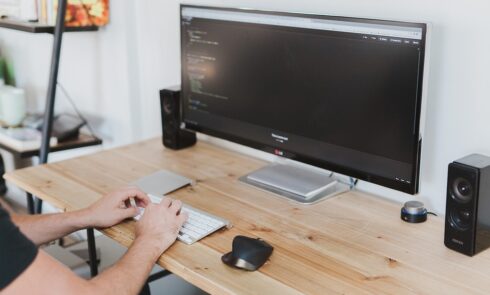In recent years, artificial intelligence has crossed from being a specialized research topic into a widely used creative tool. From writing poems to generating code, neural networks are reshaping what we once considered exclusively human territory. For programmers — once seen as the architects of logic, structure, and invention — the rise of AI introduces both a revolution and an existential question: where does creativity live when algorithms can create?
The line between human-crafted code and machine-generated solutions is becoming increasingly blurred. In a world where large language models (LLMs) can produce entire applications from simple prompts, many wonder: what is the future role of the programmer, and more importantly, what space remains for creative expression?
The Rise of Machine-Generated Code
Not long ago, writing software required a deep understanding of syntax, control flow, data structures, and system architecture. Today, AI coding assistants like GitHub Copilot, Amazon CodeWhisperer, and ChatGPT have redefined that process. These tools can autocomplete entire functions, refactor legacy code, suggest solutions to bugs, and even explain unfamiliar APIs.
In fact, neural networks trained on vast amounts of open-source code now perform with surprising competence in domains once reserved for expert developers. With a few prompts, they generate HTML templates, build React components, or spin up backend services.
This efficiency can’t be ignored. For businesses, the allure is obvious: faster development, lower costs, and automated scalability. But for individual programmers, this shift is more personal. Where we once owned the full arc of problem-solving, we now find ourselves as editors, curators, or prompt engineers.
Is Automation Killing Creativity?
One of the fears echoing through developer communities is that AI tools might reduce programming to mechanical oversight — that the art of code will fade into a series of checkbox tasks and autocomplete suggestions.
But this perspective underestimates the complexity of software development and the true nature of creativity in code.
Creativity in programming doesn’t stem solely from syntax or from writing the code line by line. It comes from architecting solutions to unique problems, finding elegant abstractions, optimizing for performance under pressure, and balancing trade-offs that no algorithm can fully understand. It’s about seeing beyond the “what” to understand the “why.”
Neural networks are good at replicating patterns. They generate code based on precedent. But real-world software problems often demand inventiveness — combining knowledge across domains, handling ambiguous requirements, and considering long-term maintenance in ways that today’s AI can’t consistently do.
In other words, AI can generate answers. But programmers still frame the questions.
The Creative Edge: Where Humans Still Shine
Consider the process of building a digital product. A neural network may write your database schema and suggest endpoints for your API. But it cannot grasp the nuances of user behavior, cultural context, business vision, or ethical responsibility.
When designing an app for mental health, for example, it’s not enough to deliver technically functional features. A human developer considers emotional impact, accessibility, tone of voice, and trust. Creativity emerges not just in the code, but in the decisions behind what gets built and why.
Even within technical constraints, creativity thrives. Choosing between a queue system and a publish-subscribe model for event handling isn’t just an architectural decision — it reflects performance expectations, failure tolerance, and user experience. No AI today can holistically weigh all these variables within a unique context.
Prompt Engineering: The New Art?
In the era of neural code generation, a new form of creativity is emerging — crafting precise, effective prompts. Prompt engineering is less about issuing commands and more about communicating intent with clarity and depth.
Those who master this skill are not just users of AI, but collaborators with it. They design flows where human intuition leads and machine intelligence assists. In many ways, it echoes the creative relationships artists have with brushes or filmmakers with cameras — tools that execute but do not invent.
Prompt engineering rewards those who think abstractly and define problems clearly. It forces programmers to move beyond technical detail and into higher-level conceptual thinking. In this sense, it may sharpen the creative edge rather than dull it.
Collaboration, Not Competition
Perhaps the central misunderstanding of the “programmer vs. algorithm” narrative is its framing. AI isn’t a rival to developers; it’s an augmentation. The greatest creative leaps often come not from isolation but from collaboration — and this includes collaboration with machines.
Developers now have access to tools that help them prototype faster, explore broader solution spaces, and test ideas that might have taken days to implement manually. When used wisely, these tools free up time and mental energy for the aspects of software that demand human judgment and imagination.
Instead of asking “Will AI take my job?” a more empowering question might be “How can AI help me be more original?”
Rethinking the Craft
The arrival of neural networks doesn’t devalue programming — it evolves it. As lower-level coding tasks become automated, the definition of “developer” shifts toward systems thinking, interdisciplinary creativity, and ethical design.
Tomorrow’s most valuable programmers may not be those who memorize the most syntax or write the most lines of code. They’ll be those who can blend technology, storytelling, and vision — who know how to use AI tools to extend their reach without outsourcing their integrity.
In this landscape, creativity is not diminished. It’s redefined.
Conclusion: The Human Element Endures
In the face of automation, it’s tempting to assume we’re becoming obsolete. But history tells a different story. When photography arrived, painting didn’t vanish — it evolved. When calculators were invented, math didn’t become irrelevant — it deepened.
In the same way, AI won’t replace programmers. It will change what programming is.
At its core, software development remains a human endeavor — full of judgment, invention, and empathy. Neural networks can generate code, but they cannot imagine futures, weigh values, or care about the outcome.
Creativity in programming has never been about typing alone. It lives in curiosity, in the courage to question assumptions, and in the decision to build not just functional software, but meaningful solutions.
And that is something no algorithm can replicate.


